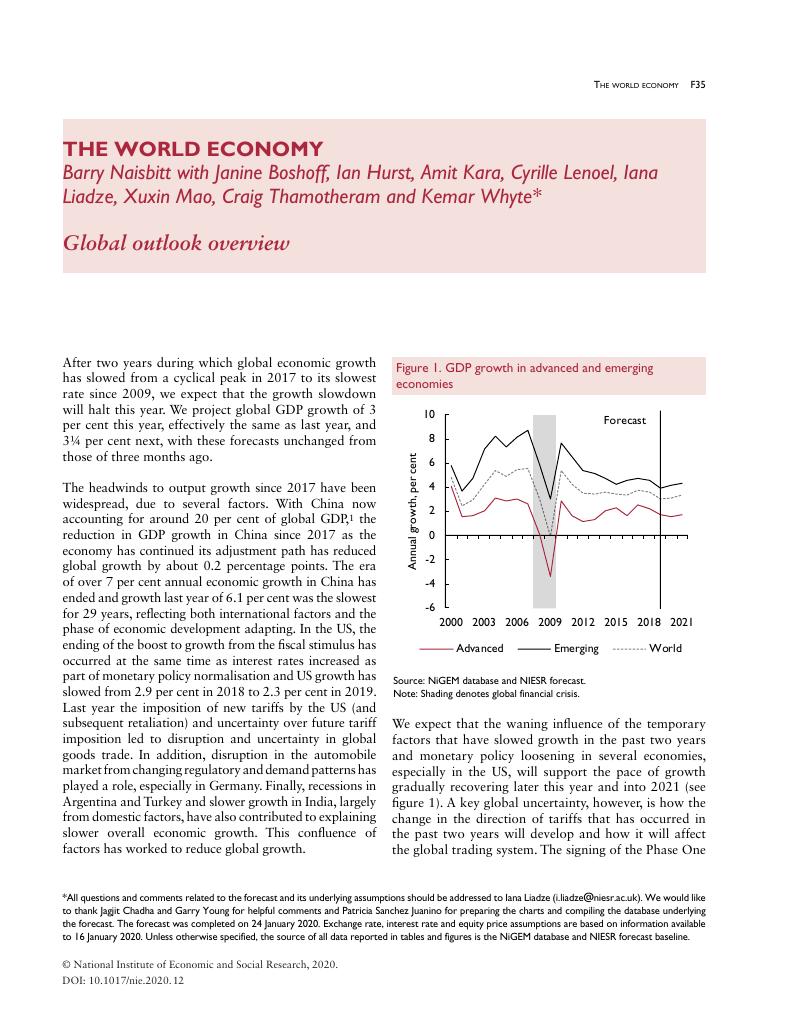No CrossRef data available.
Article contents
THE WORLD ECONOMY: Global outlook overview
Published online by Cambridge University Press: 05 February 2020
Abstract

- Type
- Forecast Summaries
- Information
- Copyright
- © National Institute of Economic and Social Research, 2020
Footnotes
All questions and comments related to the forecast and its underlying assumptions should be addressed to Iana Liadze (i.liadze@niesr.ac.uk).
We would like to thank Jagjit Chadha and Garry Young for helpful comments and Patricia Sanchez Juanino for preparing the charts and compiling the database underlying the forecast. The forecast was completed on 24 January 2020. Exchange rate, interest rate and equity price assumptions are based on information available to 16 January 2020. Unless otherwise specified, the source of all data reported in tables and figures is the NiGEM database and NIESR forecast baseline.




